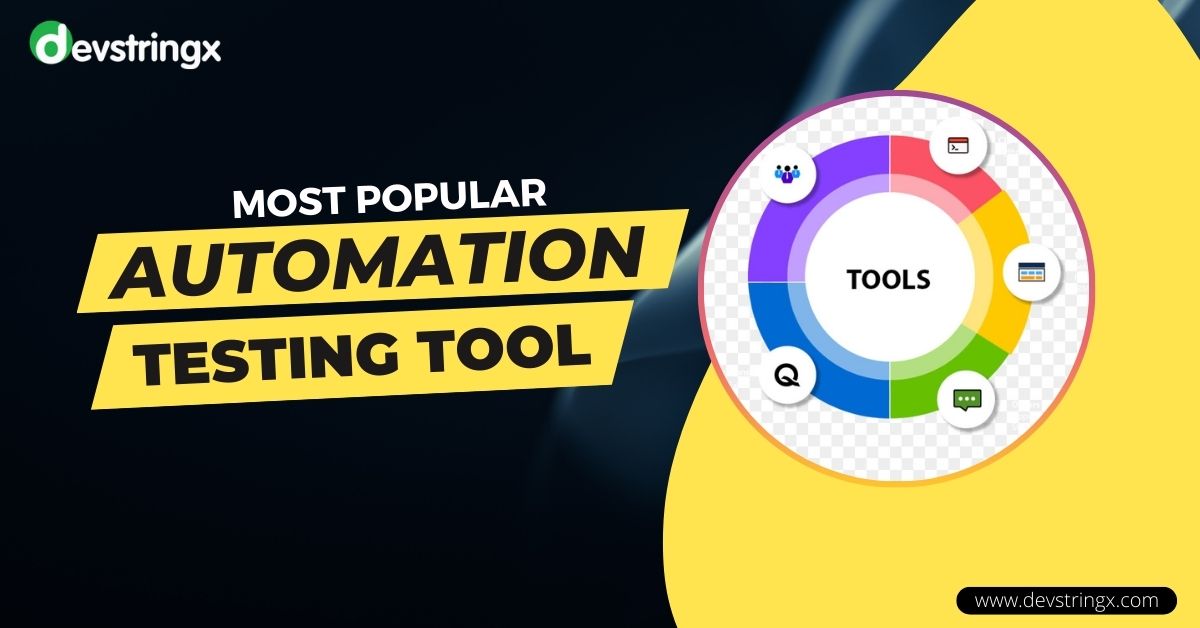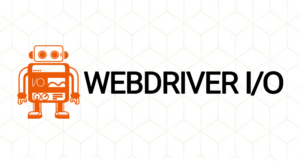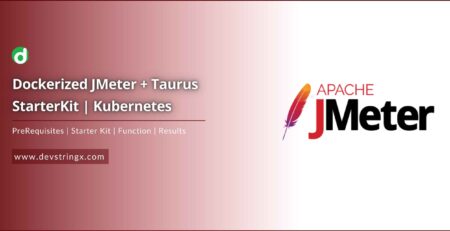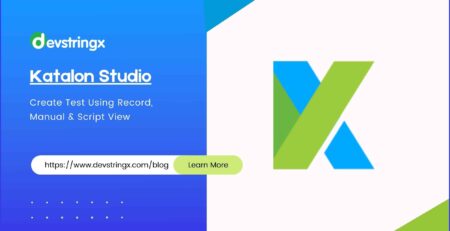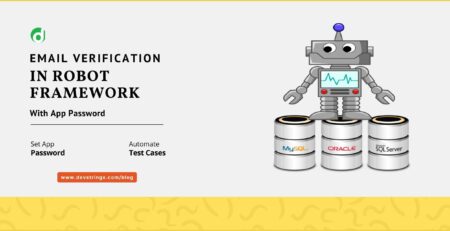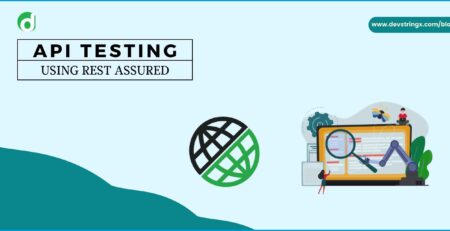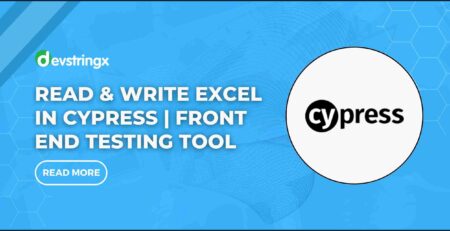What are the Most Popular Tools for Automation Testing? – Devstringx
In today’s fast-paced world of software development, automated testing tools have proven essential for building robust products while achieving quality fast. To meet changing demands, organizations are making great strides towards continuous integration (CI) and continuous deployment (CD), agile, and DevOps methodologies. And test automation is the essence of this aspect. The focus of automated testing tools shifts from reducing test time to improving test case coverage and effective use.
Test automation is the driving force behind the successful adoption of Agile and DevOps. However, the Global Quality Report shows that the low level of automation in testing activities is a major bottleneck for quality assurance and test development.
Automated testing with the right tools at the right time is essential to delivering high-quality products quickly. These tools can maximize the benefits of automation. Therefore, automated testing tools are an important part of the software development process.
Automated testing is essential for validating software. It also improves test execution speed and test coverage. The main advantage of automated tests is that they do not require human intervention. It will save you a lot of time. It is also error-prone and is the best solution when it comes to multilingual software.
List of Top Most Popular Automation Testing Tools
This list includes both commercial and open-source automated testing tools. However, almost all licensing tools offer free trials that you can use before deciding which tool is best for your needs.
1. ACCELQ

ACCELQ is a cloud-based AI-powered no-code test automation platform that seamlessly automates web UI, API, mobile, and desktop. Its customers are Fortune 500 companies and global enterprises that have adopted ACCELQ to dramatically accelerate their automation goals. ACCELQ has been proven to speed up automated development by 3x and reduce maintenance by 70%, delivering cost savings of over 50% compatible with continuous delivery.
Key points:
- Visual testing, comprehensive classification, and requirement mapping
- In-sprint automation, web-mobile-API, and desktop, plug-and-play
- All-inclusive subscription, unlimited proxies, 50% off
2. Virtuoso

Virtuoso leverages AI to automate end-to-end no-code testing for even the most dynamic applications. Create functional tests using natural language programming (as easy as writing manual test scripts), unified API testing, and visual regression testing for end-to-end test coverage bout without complete code. Virtuoso’s Smart Object Recognition uses AI to inspect the DOM and find all element selectors in a simple index. This is a self-directed type.
Key points:
- Run at scale on any device, browser, or cloud operating system
- Anyone can make API calls and log them for functional testing
- Instant test finding every visual regression from baseline
3. Katalon

Katalon is a test automation tool based on Selenium and Appium automation frameworks. This platform excels in versatility and ease of use given that you can write and reuse your UI test scripts without code. It is also easy to deploy and can be deployed on macOS, Windows, and Linux. Katalon also supports sequential and parallel execution and can perform remote and local tests.
Key points:
- It works on Windows, macOS, and Linux and can use for various purposes
- Minimum programming skills required to use this tool
4. Selenium

Selenium is a popular open-source automation testing framework (released under Apache License 2.0). Originally developed in 2004 by JasonHugging, Selenium is still well-known and commonly used in web application testing services. It works across multiple browsers and platforms (macOS, Windows, Linux) and tests can be written in a variety of programming languages including Python, Java, C#, Scala, Groovy, Ruby, Perl, and PHP.
Key points:
- You can write complex and advanced automation scripts
- The basis for most other software testing tools
- Supports parallel test execution to reduce test execution time
5. Cucumber
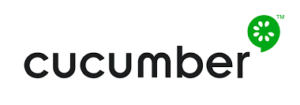
Cucumber is an open-source behavior-driven development (BDD) tool. It is one of the best open-source automation testing tools and supports languages like Ruby, Java, Scala, Groovy, and more. Writing test scripts is a collaboration between testers, developers, and customers. Cucumber only supports web environments. The test code was written in plain English called Gherkin. Cucumber code can run on a variety of frameworks, including Selenium and Ruby. Cucumber focuses on the end-user experience.
Recommend to Read:- Use of Cucumber Automation Testing Tool
Key points:
- The code can run on various frameworks like Selenium
- The test code was written in plain English called Gherkin
- Supports languages such as Ruby, Java, Scala, and Groovy
6. Appium
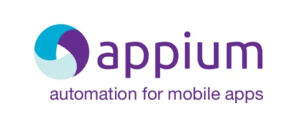
The Appium test automation framework primarily uses for mobile applications. It supports native, hybrid, and mobile web application automation designed for iOS and Android. Appium uses vendor-provided automation frameworks and is based on a client/server architecture. Appium is easy to install and use. As one of the best mobile automation testing tools, it has gained absolute popularity and reliability over the past few years.
Key points:
- Automate any mobile app with any testing language and framework.
- You don’t need to recompile the SDK or your app to test native apps.
- It uses the WebDriver protocol to drive iOS, Android, and even Windows apps.
7. TestingWhiz
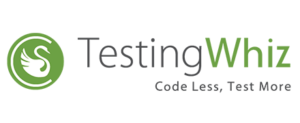
TestingWhiz is one of the best no-code automated testing tools that you can use to test web, software, database, mobile, web services, cloud, and APIs. The best part is the advanced architecture combined with the most innovative automation engine. It doesn’t take long to learn this tool. But you can take your test automation journey to the top.
Key points:
- This tool lets you automate web application testing, regression testing, cross-browser testing, database testing, mobile application testing, and web service testing.
- Get a text editor that doesn’t require keyword-based code.
- Easy integration with bug tracking tools like Atlassian JIRA and test management tools like HP Quality Center.
8. Ranorex

The reason we included Ranorex on our list of automated testing tools is because of its streamlined low-code/no-code automation tool features and rich IDE. Get instant feedback and manage costs. It can support a variety of test automation tools for mobile, web, and desktop apps.
Key points:
- Integrates with Jira, Jenkins, TestRail, and many other DevOps tools that are automated test backbones.
- Automate tests remotely or locally on virtual or physical machines.
- Run parallel tests to improve cross-browser testing.
- It removes insignificant changes and introduces meaningful changes while creating less effective scenarios.
- Get technical support anytime, anywhere.
9. Testsigma
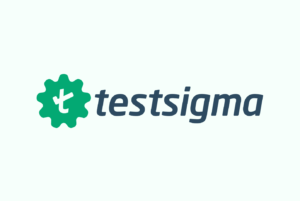 This is perfect if you want to simplify the entire testing process, from the design phase, through debugging, to reporting, under one umbrella. This end-to-end automated testing tool aims to make testing very collaborative and easy. No-code test scripts allow you to run end-to-end mobile, web, and API tests with many features like visual UI testing, data-driven testing, 2FA testing, and more. There are several alternatives to Testsigma, but it has a foothold in wireless automated testing.
This is perfect if you want to simplify the entire testing process, from the design phase, through debugging, to reporting, under one umbrella. This end-to-end automated testing tool aims to make testing very collaborative and easy. No-code test scripts allow you to run end-to-end mobile, web, and API tests with many features like visual UI testing, data-driven testing, 2FA testing, and more. There are several alternatives to Testsigma, but it has a foothold in wireless automated testing.
Key points:
- Testsigma makes it easy to replace many frameworks, broken test stacks, and complex toolchains.
- You can customize the platform if needed.
- It can be deployed locally and in the cloud.
- Get automatic reports now.
10. Tricentis Tosca
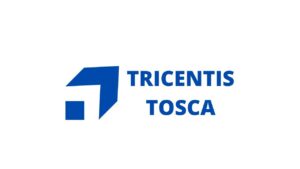
If you need a test automation platform that can accelerate and optimize end-to-end testing, then Tricentis Tosca is your best bet. This no-code, AI-powered automated testing tool helps eliminate testing bottlenecks and software release risks, accelerating innovative solutions across a variety of businesses.
Tricentis Tosca lets you perform a variety of tests, including exploratory testing, API testing, system integration testing, and mobile testing. It also supports performance testing through NeoLoad integration.
Key points:
- Inform your development team and QA about native Jira, GitHub, and Jenkins integrations.
- Whether you’re looking for agile or waterfall, get DevOps support.
- Ease integration and automation with a variety of DevOps toolchains.
- Make sure it supports almost 160 technologies.
11. Laravel

Laravel is a web application framework with an elegant and expressive syntax. It tests promote clean code with simplified syntax. It can use as a single command for a variety of reasons, including expressive coding, fast error handling, and traffic management. All of this is great for developers.
Key points:
- Get testing support for PHPUnit using predefined parameters in the phpunit.xml file.
- Start unit testing in the most efficient way possible, ensuring that all modules perform the intended behavior.
- Reduces security risks such as SQL injection, cross-site query Rosselli, and cross-site scripting.
Recommended to Read- Types of Software Testing
12. Puppeteer
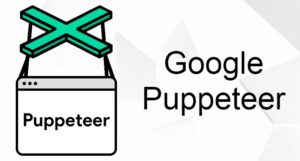
Puppeteer is just a node library that provides a high-level API in case you use the DevTools protocol to control headless Chromium or Chrome. Any programmer can use methods like .type() and .goto() to easily interact with any web browser when running Puppeteer tests. Maintenance is done by the Chrome DevTools team. It is a browser-based framework.
Key points:
- Full Chrome support is available.
- Automate UI testing, form submission, keyboard input, and more.
- Access web scraping to instantly extract content and data.
- Take a test screenshot and save a PDF of the page.
- Measure load times with the Chrome Profiling Tool.
13. Espresso

Espresso is used to create simple, reliable, and concise Android UI tests. The Espresso API allows test authors to think and work with users to interact with the application as they navigate and manipulate UI elements.
Getting and manipulating objects outside of the UI thread makes them unstable, so the framework also stops direct access to application activities and views. Therefore, methods such as get current activity() or getView() do not appear in the Espresso API. You can implement ViewAssertion and ViewAction subclasses.
Key points:
- The core API is very predictable, small, customizable, and easy to learn.
- Espresso testing demonstrates interactions, expectations, and claims without standard attention, custom infrastructure, or unnecessary implementation details.
- Espresso tests run very quickly. You can manipulate and assert your UI application from hibernation by stopping syncing, waiting, polling, and suspending.
15. TestNG
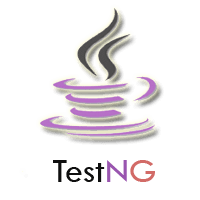
TestNG is a versatile automated testing framework. NG stands for “next generation” and takes full advantage of annotations (@) thanks to the inspiration of JUnit. TestNG lets you extend UI testing to E2E testing and integration testing. TestNG, therefore, helps to facilitate end-to-end testing. For more information on this testing framework, see the TestNG tutorial. This is a list of all LambdaTest automated testing platform browsers that can use to run TestNG tests online.
Key points:
- Generate optimal reports to see how many test cases passed, failed, or skipped.
- Understanding and using annotations is simple.
- Easily get group test cases.
- Transparent parallel testing.
16. JUnit

It is one of the most commonly used unit testing frameworks. 5 is built on top of JUnit 4. x, a completely rewritten version that provides an extensible Java testing framework that supports different testing styles. The goal of JUnit 5 is to provide updates that simplify the testing process while making it easier to use alternative means such as test parallelism and attribute-based testing. If you compare JUnit 5 with TestNG, you can see that JUnit 5 excels against other Java test automation frameworks.
Key points:
- Get annotations, identify different test methods, use testers to run tests, and use assertions to test expected results.
- Write code faster with premium quality.
- It is simple to use and does not take time.
- Run automated JUnit tests and get immediate feedback.
- Organize tests into test suites, including test cases and various test suites
- Receive alerts when tests pass or fail.
17. Jest

Jest is an easy-to-use JavaScript automation testing framework that works effortlessly with many web and mobile app development frameworks such as Node, Babel, Vue, TypeScript, React, etc. What is special? No configuration requires. Jest focuses on making it easier to install and configure most JavaScript projects.
Write tests while easily monitoring large objects. Track your tests or take a live snapshot with the online integration. Parallel testing can be done if needed to improve performance. Jest also includes an all-in-one performance-enhancing toolkit. Monitor various function calls with easy-to-read test syntax using import.
18. Jasmine

Jasmine is one of the best commonly used open-source testing frameworks in JavaScript. If you don’t want to break into your IDE or application, you can run it on any JavaScript-based platform. It also includes an easy-to-read syntax. The impact of its features comes from its predecessors including various unit testing frameworks such as RSpec, JSSpec, RSpec, ScrewUnit, etc. The main advantages are the support for asynchronous tests and the use of “watches” to implement test doubles.
Key points:
- It supports front-end code testing using a front-end Jasmine extension called Jasmine-jQuery.
- The syntax is very readable, as is RSpec.
- Access a rich set of built-in matchers.
19. Mocha

Mocha is a well-known feature-rich JavaScript testing framework that runs on Node.js and browsers. This makes asynchronous testing very enjoyable and easy to manage. It should note that Mocha tests are usually run sequentially, not in parallel. This paves the way for more accurate and flexible reporting. You can also map invisible exceptions to valid test cases. Currently hosted directly on GitHub. I use Mocha.js along with many other common assertion libraries, but Chai is the most common.
Key points:
- js provides functions to execute in a specified order.
- It also writes each result to a terminal window.
- Organize the software you want to test so that each test case runs independently and is not independent of the other.
- By default, it uses the BDD interface.
- It provides several interfaces to define the export, hooks such as TSS, Require, QUnit, test suites, and individual tests.
20. WebdriverIO
The WebdriverIO framework aims to automate modern mobile and web applications. This end-to-end testing framework is part of the OpenJS framework. You can also test NodeJS JavaScript/TypeScript applications. WebdriverIO includes many high-level features such as cross-browser testing, so you can use it in WebdriverProtocol.
Key points:
- Installation and configuration are easy.
- It is a very sturdy, expandable, flexible, and reliable frame.
- Access community plugins and built-in tools to extend your settings according to your needs and requirements.
- Get testing support for native mobile apps.
21. Pytest

Pytest framework is one of the best Python testing frameworks for writing test code using Python programming language. Easily write reliable, simple, and extensible test cases for your API, database, or UI. Pytest lets you create all kinds of tests, from simple unit tests to functional tests.
FAQs
1. What is a Quality Assurance Automation Tool?
QA automation (or automated testing) is basically the process of automating the testing of software and mobile apps using automation tools. First, QA automation tools perform repetitive (or manual) testing tasks previously performed by human testers.
2. Is Python used in quality control?
Using Python for automated software testing optimizes QA resources so your team can spend more time on complex tasks and features that require manual review.
3. What are the top 05 most commonly used popular tools for automation testing?
If we checked on Google so we find lots of popular test automation tools but based on client’s reviews & some other parameters I selected the top 05 most trending automation testing tools which widely use in IT sectors
- Appium
- Virtuoso
- Katalon
- Selenium
- Cucumber
3. What tools do you primarily use for automated testing?
Selenium tools are currently part of all automated testing tools. Selenium is one of the most widely used web application automation testing tools. It is an open-source platform compatible with many browsers, operating systems, and programming languages.
4. Can negative test cases be automated?
Negative tests are effective for automation. Indeed, it is important that applications reliably handle negative conditions similar to positive conditions during regression testing. However, if there is a risk that the system may not be able to handle the error under certain circumstances, these scenarios should be added.
5. What is the Role of Quality Assurance in Automation Testing?
It encompasses overseeing the testing process to ensure it meets business requirements, analyzing test outcomes for insights, identifying improvement areas, and ensuring the evolution of testing strategies in line with application development.
Future Trends and Evolution
1. What is the Future of Automation Testing?
The future of automation testing involves the integration of AI and ML for smarter test generation and maintenance, increased focus on security and performance testing, and more sophisticated tools for complex applications. In addition, the advancement of DevOps and Agile methodologies will also continue to shape automation testing, emphasizing continuous testing and integration.
2. How Does the Integration of AI in Tools Like Testim and Functionize Work?
AI integration in tools like Testim and Functionize enables self-healing tests, where AI algorithms automatically adjust test scripts to accommodate minor changes in the application, reducing maintenance effort. AI also assists in identifying patterns in test results, optimizing test coverage, and enhancing test accuracy.
3. What are Some Emerging Tools in the Market for 2024?
Emerging tools in 2024 include those with advanced AI capabilities for predictive analysis and self-healing tests, cloud-based platforms for enhanced scalability and collaboration, and tools offering more comprehensive testing solutions, including performance, security, and usability testing in a single framework.
4. How Does the Integration of AI and ML Affect the Future of Automation Testing?
The integration of AI and ML transforms automation testing by making it more efficient, with capabilities like predictive analysis, automatic test case generation, and intelligent anomaly detection. This evolution will enable faster adaptation to application changes and more insightful testing outcomes.
5. What are the Expected Advancements in Automation Testing in the Next Five Years?
In the next five years, expect to see more AI-driven test optimization, increased use of cloud-based testing platforms, advancements in real-time testing analytics, and enhanced tools for complex environments like IoT and microservices.
6. How are Automation Tools Evolving to Meet New Software Development Methodologies?
Automation tools are evolving with a diverse array of features that support continuous integration and delivery, offering faster and more frequent testing capabilities. They are adapting to Agile and DevOps methodologies by facilitating more collaborative and iterative testing processes.
7. What Impact Will Emerging Technologies like IoT Have on Automation Testing?
IoT will expand the scope of automation testing to cover vast networks of interconnected devices, requiring tests for functionality, performance, security, and interoperability. In addition, automation tools will need to simulate complex IoT environments and handle large volumes of data.
8. How Can Automation Testing Contribute to Innovative Software Development?
Automation testing contributes to innovative software development by enabling faster release cycles, ensuring high-quality products, and allowing developers to focus on creative and complex tasks by handling routine testing automatically.
9. What are the Potential Developments in Automation Testing for Cloud Computing?
In cloud computing, expect developments like enhanced cloud-based testing platforms offering greater scalability and flexibility, tools optimized for cloud-native applications, and advanced security testing features to address cloud-specific vulnerabilities.
10. How Will Automation Testing Adapt to the Increasing Demand for Cybersecurity?
Automation testing will adapt to cybersecurity demands by incorporating more sophisticated security testing tools capable of simulating cyber-attacks, identifying vulnerabilities, and ensuring compliance with security standards.
11. What Role Will Automation Testing Play in the Development of Smart Cities?
In smart cities, automation testing will play a crucial role in ensuring the reliability and security of interconnected systems and infrastructure. It will be essential for testing complex integrations and real-time data processing systems prevalent in smart city technologies.
If you are interested in even more software testing-related articles and information from us here at Devstringx, then we have a lot to choose from for you.

